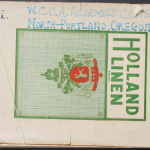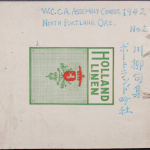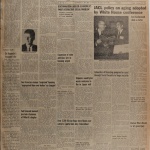Toyo Suyemoto
| Name | Toyo Suyemoto |
|---|---|
| Born | 1916 |
| Died | 2003 |
| Birth Location | Oroville, CA |
| Generational Identifier |
Nisei inmate, librarian, poet, and memoirist. Though late in life she stated decisively that she wished to be remembered by her family name, she published earlier as Toyo Kawakami, Toyo S. Kawakami, and Toyo Suyemoto Kawakami. (Kawakami was the surname of her husband, a journalist and poet.) Though known today almost exclusively for her poetry, the only book Suyemoto published in her lifetime was a 1971 reference work for librarians, Acronyms in Education and the Behavioral Sciences . In 2007 the memoir I Call to Remembrance: Toyo Suyemoto's Years of Internment was posthumously published by Rutgers. Susan Richardson edited the memoir, working with mostly unpublished manuscripts and notes archived in The Ohio State University library where Suyemoto launched her midlife career.
Education in California, Imprisonment in Utah, and Vocation in Ohio
Suyemoto was born in 1916 in Oroville, California, and grew up in Sacramento. She and her eight siblings [1] learned Japanese literature from their mother, who also recited Japanese translations of Shakespeare. Suyemoto's adoption of literary forms began with her mother, and her more particular love of traditional English forms was inspired by her college teachers, especially during her undergraduate years at Berkeley, English literature professor Betrand H. Bronson. Even after the war she enrolled in workshops at the University of Cincinnati taught by such eminent visiting poets as Randall Jarrell and Karl Shapiro. She relished the memory of the encouragement of her poetry by Scottish critic David Daiches.
As early as her teenage years, Suyemoto published poems in Japanese American community magazines and newspapers, and became a central figure in a northern California Nisei literary community. At Berkeley, not surprisingly, she majored in English. Just as West Coast Japanese Americans were forced into mass incarceration, Suyemoto's husband abandoned her and their weeks-old infant son, Kay. She and Kay were allowed to reside with her parents and siblings, first in the temporary detention camp at Tanforan , then more indefinitely at Topaz in the Utah desert. While in Topaz Suyemoto worked in the makeshift library and taught English and Latin. [2] With her friend, writer and artist Miné Okubo, she also served on the staff of Trek and All Aboard , the camp literary magazine in which several of her poems first appeared.
After the war, she and her parents followed a brother to Cincinnati, where she worked in libraries at the University of Cincinnati and the Cincinnati Art Museum. Mostly, though, she cared for her family, especially her parents and her son. In 1958, at sixteen, Kay died of illnesses contracted in camp. After the deaths of her parents, Suyemoto attended the University of Michigan for a Masters in Library Science degree, and in 1964 started her career at The Ohio State University, where she became Head of the Social Work Library and Assistant Head of the Education Library. She retired in 1985 and spent the rest of her life in Columbus. In the early 1980s she revisited Topaz and testified before the Commission on Wartime Relocation and Internment of Civilians. In her last two decades Suyemoto spoke frequently before high school, university, and community audiences about her wartime experience. She also granted interviews and published articles on her life and work. Her poems were discovered and praised by a later generation of Asian American writers such as Frank Chin and Lawson Fusao Inada. In a 1995 book review for The Nation , Inada casually referred to Suyemoto as "our major Camp Poet and Nikkei Poet Laureate. [3]
A Life's Work and Late Acclaim
Suyemoto published a few poems shortly after the war in mainstream magazines such as Common Ground and Yale Review , and a few more trickled into print between the 1940s and 1970s. But a larger celebration of her poems had to wait till their discovery by Chin and Inada. Some of them appear in Ayumi: A Japanese American Anthology (1980), Quiet Fire: A Historical Anthology of Asian American Poetry 1892-1970 (1996), and the magazines Many Mountains Moving and Amerasia Journal . She prepared manuscripts for Chin and Inada, but the final state of these collections remains unclear. Her archived manuscripts include the previously unpublished works gathered for the memoir by Richardson.
Though in much of her work Suyemoto adhered to traditional English-language poetic forms and metrics—ballads and sonnets feature at least as prominently as Japanese haiku and tanka—still Chin praised them for faithfully registering Japanese Americans' experience. Suyemoto claimed that the discipline of writing in forms liberated her language. Taken out of the context of Nisei wartime history, many of her poems might be regarded as nature writing. Surely they describe, in the manner of Whitman and Hopkins, sudden lyrical outpourings of feeling. The poem "Gain," first published in Trek in 1942, assumes the form of a ballad not to narrate but to describe:
I sought to seed the barren earth
And make wild beauty take
Firm root, but how could I have known
The waiting long would shake
Me inwardly, until I dared
Not say what I would gain
From such untimely planting, or
What flower worth the pain? [4]
The standard reading of Suyemoto's camp poems maintains that their innocent surfaces mask expressions of rage, despair, sorrow, and hope—the mask being necessary because of government censorship. Susan Schweik, for example, claims that they "embed" a historical critique and that they serve as "oblique parables of loss and recovery, hope and despair, from a specifically Japanese American history." [5] Richardson argues that Suyemoto's memoir is "remarkable for its absence of bitterness, its avoidance of accusation," and for Suyemoto's refusal to play "the role of victim." [6] Such observations by sympathetic white liberal critics are no more surprising than very different observations—stressing the poems' critique and resistance—by Asian American writers such as Chin. Surely everyone who met Suyemoto noted her feistiness and her generous sense of humor, but even in old age she advised young Japanese Americans not to join the Japanese American Citizens League, recalling bitterly its refusal to oppose the government's forced incarceration and its informing against resisters. Perhaps her best comment on the camps is one of her last comments, from the poem "Topaz, Utah," written after her revisiting the campsite. The poem ends on a mix of resignation and wonder:
Stillness is change
For this abandoned place, where strange
And foreign tongues had routed peace
Until the refugees' release
Restored calm to the wilderness,
And prairie dogs no longer fear
Where shadows shift and disappear.
The crows fly straight through settling dusk,
The desert like an empty husk,
Holding the small swift sounds that run
To cover when the day is done. [7]
Though many of Suyemoto's postwar poems recall the camps, she also wrote about family, nature, community, and age. Among the poems of her last six decades are elegies to her mother, her son, and even Anne Frank. "Rare Snow," written in 1989 and gathered in the memoir, recalls a first childhood sighting of snow in Sacramento. Her haiku and tanka register nature's obstacles and humans' hopes. In her last decade she recited for visitors her 1993 haiku:
Mortality stares
At me steadily—I smile
And return that gaze. [8]
Those visitors in her later years included Chin, Inada, painter Julian Stanczak, and photographer Masumi Hayashi. Keeping a promise to her son, she maintained an active cultural life, attending plays and concerts till her health slowed her, and even then she ranted, with a laugh, against aging, "Screw the golden years!"
For More Information
Matsumoto, Valerie. "Desperately Seeking 'Deirdre': Gender Roles, Multicultural Relations, and Nisei Women Writers of the 1930's." Frontiers 12.1 (1991): 19-32.
Schweik, Susan. A Gulf So Deeply Cut: American Women Poets and the Second World War . Madison, WI: University of Wisconsin Press, 1991.
Streamas, John. "Toyo Suyemoto, Ansel Adams, and the Landscape of Justice." In Recovered Legacies: Authority and Identity in Early Asian American Literature edited by Keith Lawrence and Floyd Cheung, 141–57. Philadelphia: Temple University Press, 2005.
Suyemoto, Toyo. Acronyms in Education and the Behavioral Sciences . Chicago: American Library Association, 1971.
———. "Another Spring." In Last Witnesses: Reflections on the Wartime Internment of Japanese Americans , edited by Erica Harth, 21–34. New York: Palgrave, 2001.
———. The Toyo Suyemoto Papers: A Guide. SPEC.CMS 161. Comp. Maureen H. Donovan and Shelley Bloom. The Ohio State University Libraries Rare Books and Manuscripts. http://library.osu.edu/finding-aids/rarebooks/suyemoto.php
———. I Call to Remembrance: Toyo Suyemoto's Years of Internment . Edited by Susan Richardson. New Brunswick, NJ: Rutgers University Press, 2007.
Yamamoto, Traise. Masking Selves, Making Subjects: Japanese American Women, Identity, and the Body . Berkeley, CA: University of California Press, 1999.
Yogi, Stan. "Voices from a Generation Found: The Literary Legacy of Nisei Writers." Forkroads: A Journal of Ethnic American Literature 5 (fall 1996): 64-73.
Footnotes
- ↑ Suyemoto had three sisters and seven brothers, but twins Benjamin and Franklin died in infancy. Biographical material in this paragraph and throughout are gleaned from Susan Richardson, introduction to I Call to Remembrance: Toyo Suyetomo's Years of Internment by Toyo Suyetomo (New Brunswick, NJ: Rutgers University Press, 2007), xvii-xlvi; as well as Suyemoto's conversations with the author from 1995 through 2003.
- ↑ In April 2009 the Salem, Oregon Public Library hosted a staged reading by poet Lawson Inada and historian Linda Tamura of the play The Topaz Public Library , based on Suyemoto's experiences as a camp librarian and teacher. See the announcement at http://www.culturaltrust.org/sites/all/files/oldpress/Poet%20Laureate%20April%20Appearances.pdf
- ↑ See Inada's review of Page Smith's Democracy on Trial: The Japanese-American Evacuation and Relocation in World War II at http://www.english.illinois.edu/maps/poets/g_l/inada/ghostly.htm .
- ↑ Quoted in Susan Schweik, A Gulf So Deeply Cut: American Women Poets and the Second World War (Madison, WI: University of Wisconsin Press, 1991), 187.
- ↑ Schweik, A Gulf So Deeply Cut , 188.
- ↑ Richardson, introduction to I Call to Remembrance , xvii.
- ↑ Quoted in Stan Yogi, "Voices from a Generation Found: The Literary Legacy of Nisei Writers," Forkroads: A Journal of Ethnic American Literature 5 (fall 1996): 68.
- ↑ Richardson, introduction to I Call to Remembrance , xxix.
Last updated Jan. 8, 2024, 7:53 p.m..








